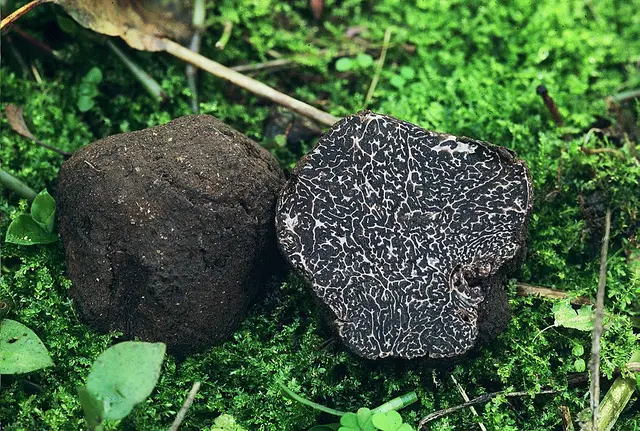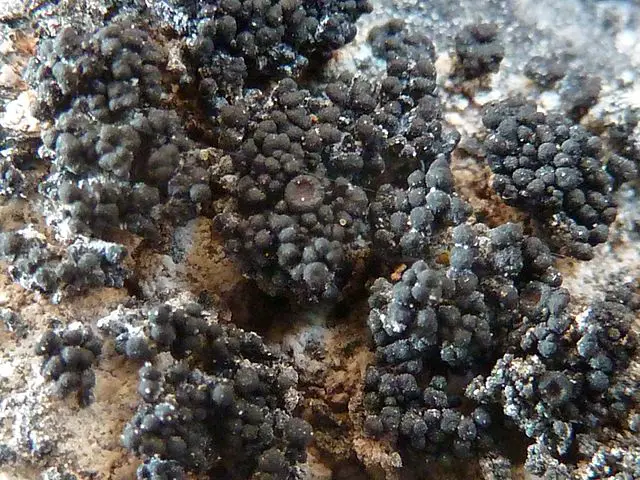Pezizomycotina
Habitat, Examples, Classification and Phylogeny
Pezizomycotina is the largest subphylum of phylum Ascomycota (also known as sac fungi). With well over 100,000 species (over 30,000 of these species have been well described), this subphylum is composed of a vast number of filamentous species (highest number of filamentous species in the phylum).
Compared to some groups of fungi that largely rely on specific, limited nutritional modes, the nutritional modes of Pezizomycotina range from pathogenic and parasitic modes to symbiotic to saprophytic modes making the subphylum one of the most successful group of fungi.
Major characteristics of Pezizomycotina:
- They are cup fungi (they produce a fruiting body in the asci)
- A majority of the species in the subphylum produce hyphal threads
- Mostly reproduce through fission
- Septa with Woronin bodies
- Septa of the fungi have wide central pores
* All ascomycetes (apart from Neolecta) that produce fruiting bodies fall under Pezizomycotina.
Examples of species in this subphylum include:
- Sordariomycetes
- Lecanoromycetes
- Leotiomycetes
- Pezizales
- Orbiliomycetes
Habitat
Being one of the largest subphylum of Ascomycota, Pezizomycotina is composed of many ecologically diverse species of fungi that can be found in a wide range of habitats.
In particular, this is because different species use different modes of nutrition. Whereas some depend on a host for their survival, others obtain their nutrients from decaying matter.
The fungi that fall under this subphylum therefore can be found in a wide range of habitats from aquatic environments to terrestrial environments depending on their mode of nutrition. For instance, members of Class Lecanoromycetes tend to form lichens and are therefore common in many terrestrial environments.
Sporocarp
A sporocarp refers to the structure that releases spores. This structure has been identified in some of the species.
The following types of sporocarps have been identified:
- Apothecia - The apothecium is found in many lichens and species of the subphylum and consists of a cup or disc shaped body on the concave surface. The asci (that contains the spore) are exposed to the environment.
- Perithecia - Compared to apothecia, the perithecia are partly closed. However, the ostiole is exposed through a small opening
- Cleitothecia - Compared to apothecia and perithecia, the Cleistothecia is closed completely while the ascospores are arranged randomly across the sporocarp.
- Ascostromata - The ascospores of the Ascostromata are contained in a large cavity that resembles other sporocarps.
The asci are classified as:
- Inoperculate
- Operculate
- Prototunicate
- Unitunicate
- Bitunicate
Pezizomycotina Phylogeny
Phylogeny refers to the system used showing the relationships (evolutionary relationships) between given species.
In the past, for this subphylum, these relationships were largely based on the structure and development of the fruiting bodies and asci of these species. Using phylogenetic analysis, the subphylum was shown to consist of 10 major groups (clades) of Pezizomycotina.
* Here, it is worth noting that additional studies are being conducted to eliminate inconsistencies in this system.
Life Cycle of Pezizomycotina (Based on Mode of Nutrition)
Parasitic
Hypocreales
The Order Hypocreales is classified under Sordariomycetes, which falls under the subphylum Pezizomycotina. Studies have shown members of Order Hypocreales to be an important insect pathogen in addition to also affecting plants.
Like many other organisms that fall under this subphylum, an analysis of Hypocreales helps reveal the life cycle of these parasitic organisms.
Members of Pezizomycotina like Hypocreales that infect insects and arthropods (acting as parasites) are referred to as entomopathogenic fungi. As such, they infect the host insect/arthropod and causing harm to the host and even killing them eventually.
The life cycle starts with the spores attaching and penetrating the hard epicuticle of the insect/arthropod. Penetration is made possible by germination of the spore(producing hyphae) and the secretion of proteolytic enzymes that dissolve the hard epicuticle.
Degradation of the epicuticle along with hyphal pressure allows the fungi to grow into the host for further development. This mechanism has also been identified in other filamentous Pezizomycotina that affect plants.
Intra-host growth of the fungi allows the fungi to use nutrients from the body of the host insect to continue developing and produce conidia that continue the life cycle in other insects/arthropods. These spores are produced externally from the conidiophores that grow externally and are dispersed by the wind.
* Hypocreales do not have a teleomorphic state. This means that sexual phase is not part of their life cycle.
* Studies have shown that these organisms exhibit high virulence. As a result, high mortality rates are common. Moreover, they are highly immune to the defense system (immunity) of the host, which allows them to survive the infection.
* While the Order Hypocreales is composed of many entomopathogenic fungi, some also exist as saprophytes while others are capable of forming symbiotic relationships with their hosts for survival. As such, they do not cause harm to the host.
Nematode-Trapping Fungi
Whereas parasitic fungi use their hyphae and enzymes to infect and destroy the host, a number of other fungi have been shown to use specialized devices to trap and destroy nematodes. For instance, according to a study that was conducted in 2010, Pezizomycotina was divided into nine major groups based on their genetic makeup.
Some of these were shown to be nematode-trapping fungi, which mean that they have the capacity to trap the host nematodes before infecting them. This is achieved through the use of such devices as adhesive columns, adhesive networks and constricting rings among other devices.
Having trapped the nematodes, these fungi gradually destroy the host while obtaining nutrients from them. This is made possible by the secretion of subtilisin-like serine proteases. Like the enzymes secreted by Pezizomycotina fungi, these proteases play an important role of degrading the host's cuticle and thus allow for intra-host growth.
These mechanisms are also used by fungi that affect plants. Given that plant cells have a cell wall, these secretions help degrade these rigid surfaces making it possible for the hyphae to grow into the host cells and tissue.
While the hyphae continue growing and obtaining nutrients from the plant/insect/arthropod host, these secretions also accelerate the mortality rate of the host through degradation.
Given that some members like Hypocreales are entomopathogenic, they have become an important way of controlling pests that infect and destroy plants. As such, they are formulated in powder form and sprayed on plants to destroy such pests and aphids and thus protect crop damage.
Other significance:
- Diseases - Some of the fungi in this subphylum (such as Coccidioides immitis) are pathogenic and cause such diseases as Coccidioidomycosis (Valley fever)
- Some of the fungi like Penicillium chrysogenum have been shown to be sources of protein while others are used to produce drugs
Lichen
Pezizomycotina fungi have been shown to include some of the most lichenized fungi. Essentially, lichen is composed of a fungus and algae. This relationship allows the two organisms to live together in a way that they can benefit from each other.
Some of the groups that have been shown to form lichens with algae include Leotiomycetes and Arthoniomycetes among a few others.
Lichenized Arthoniomycetes
Arthoniomycetes is a class of ascomycete fungi that falls under the subphylum Pezizomycotina and forms lichen (lichenized fungi). Here, the fungus in referred to as mycobiont while the algae is the phycobiont/photobiont. When the two come together, the fungus produces filaments that grow around and into the algae cells.
The result of this combination is an organism with a different morphology that is different from the two original organisms. However, the fungus (mycobiont) makes up the biggest percentage (about 90 percent) of the lichen body (thallus). As a result, the color and general shape of this composite organism is defined by the mycobiont.
* One of the biggest benefits of lichenization is that it allows the fungi to thrive in a wide range of environments with different climatic conditions. In addition, lichenized fungi are capable of obtaining nutrients and growing on a wide range of substrates.
Lichen Reproduction
In their lichenized state, Pezizomycotina can reproduce in either of two ways.
These include:
Production of Soredia
Soredia refer to the packages composed of algal cells that are covered by fungal filaments. Here, these packages are released from the thallus (from structures known as soralium). The soredia, released in large amounts, look like dust and are easily carried by the wind. This form of dispersal allows the cells (covered by hyphal threads) to be transported to other substrates where they can continue the life cycle and produce new lichen.
Isidia
This is the second method of reproduction that involves the production of algae cells and fungal tissue inside the isidia.
Here, globose-like structures (Isidia) grow out of the thallus with algal cells and fungal tissue. This is different from soredia in that the cells and fungal tissue are surrounded by a cortex (protective later of tissue). The cortex tissue has been shown to play an important role in photosynthesis.
* Symbiosis of Pezizomycotina organisms also involves a relationship with other plants and animals.
Saprophytic Nutrition and Reproduction
Entomopathogenic species have been shown to be able to switch from parasitism to saprophytism. This is known as hemibiotrophic and involves deriving nutrients from decaying matter. Here, the entomopathogenic species start by infecting and killing the host insect.
When the insect dies, the fungi continue deriving nutrients from the dead insect and any other dead organism in their environment. As the fungi grow on these dead organisms, some of the mycelia develop conidiophores that produce the conidia.
The conidia are then dispersed by a range of agents including wind and insects allowing for the life cycle to continue in other living insects or dying insects. In this method of reproduction (asexual reproduction) haploid spores (conidiophores) can germinate in favorable conditions for the life cycle to continue.
With regards to sexual reproduction, two compatible hyphae (male and female) come together followed by the development of a special hyphae called a gametangium. This grows towards the gametangium of the other hypha with the female gametangium (ascogonium) directing the hyphae of the male (antheridium).
Nuclei of the male them moves to the ascogonium and fertilizes it. This gives rise to dikaryotic hyphae with two nuclei and ultimately to the development of asci in structures known as fruiting bodies.
Haploid nuclei produced in the asci are then covered by a membrane and develop into ascospores. When these ascospores are released in their environment (with favorable conditions), the life cycle continues.
Importance of Pezizomycotina
Some of the important uses of these filamentous fungi include:
- Use of certain species (such as Hypocreales) as biological agents against pests and other micro-organisms
- Increasing biomass through degradation of organic matter
- Some of the filamentous fungi are used to manufacture paper (high quality paper)
- Truffles and some of the species in this subphylum are consumed as foods
Return to Ascomycota Info Page
Return from Pezizomycotina to Fungus Main Page
Return to MicroscopeMaster Home
References
David McLaughlin and Joseph Spatafora. Systematics and Evolution. 2014.
Helen et al. The Ecology of Fungal Entomopathogens. 4 February 2010.
Zhiqiang An. Handbook of Industrial Mycology. August 30, 2004 by CRC Press.
Links
https://bmcevolbiol.biomedcentral.com/articles/10.1186/1471-2148-10-68
https://www.ck12.org/biology/Ascomycota/lesson/Ascomycota-Advanced-BIO-ADV/
Find out how to advertise on MicroscopeMaster!

![Bionectria Pezizomycotina by Joseph O'Brien [Public domain], via Wikimedia Commons Bionectria Pezizomycotina by Joseph O'Brien [Public domain], via Wikimedia Commons](https://www.microscopemaster.com/images/Bionectria-pezizomycotina.jpg)





